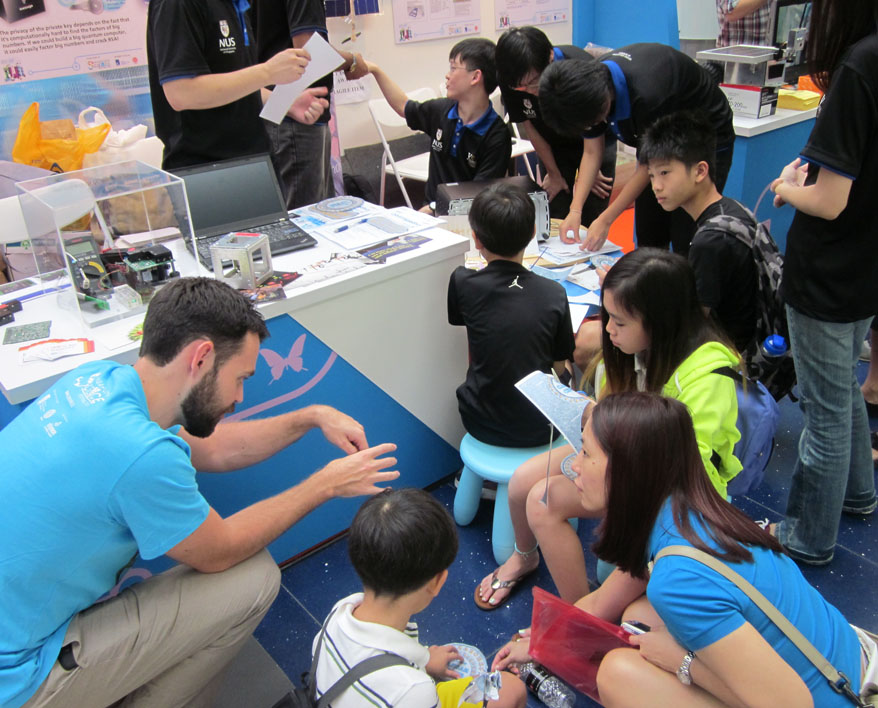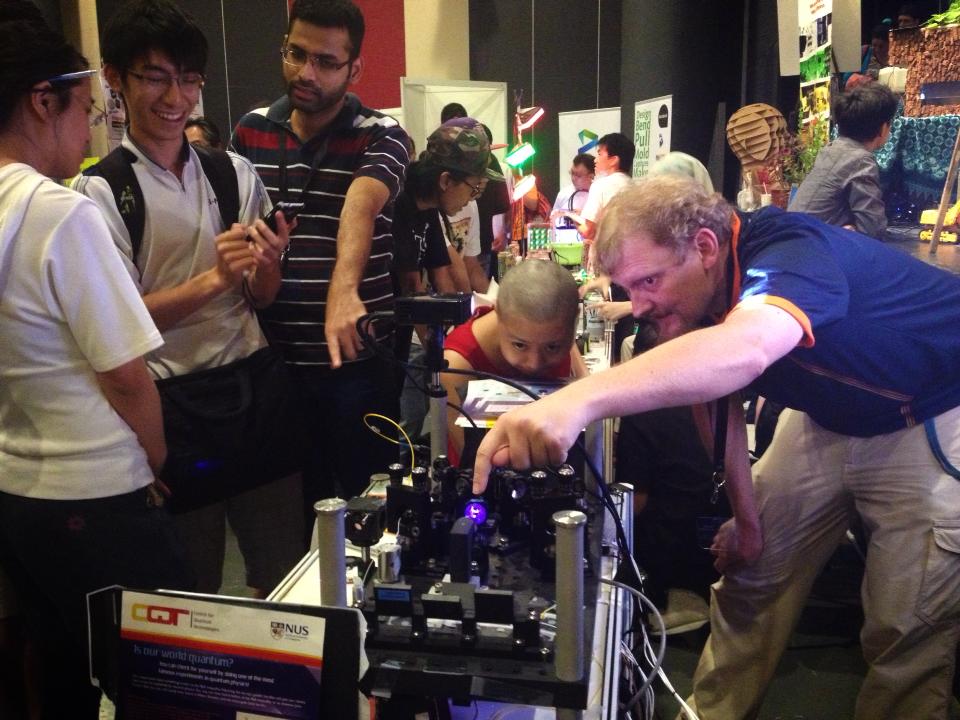Highlights
Quantum physics at the Singapore Science Festival

An exhibition about cryptography is not something you usually find in a shopping mall. The CQT-NUS stand drew crowds!
Heaps of kids and curious adults had encounters with quantum physics during the Singapore Science Festival 2013. CQTians participated in two public events that formed part of the summer-long science extravaganza. CQT PI Alexander Ling and his team took their miniaturised quantum light source to the X-Periment! Festival held in a shopping mall, while PI Christian Kurtsiefer and PhD student Markus Baden organised a group to participate in a 'Maker Faire'. There they showed how they build much of their complex experimental kit from scratch.
X-Periment!
CQT partnered with the National University of Singapore's Science Demo Lab to put on an exhibition about cryptography of the past, present and future. Visitors got a hands-on experience with the chance to write messages with invisible ink (lemon juice) and make their own Caesar cipher. There were also worksheets on RSA cryptography (widespread today) and, from Alex's team, a live demonstration of the kit that creates quantum-entangled photons for cryptography secured by physics. Alex and his group have miniaturised the laser-based setup into a rugged package — it's perfect for public events, though their end goal is to send it into space on a satellite. They are testing technology that could one day support a global quantum communication network.
X-Periment took place 19-21 July at Marina Square mall
Singapore Mini Maker Faire

CQTians participated in Singapore's Mini Maker Faire to show how they hack technology for research.
Christian and Markus, along with other CQTians Chng Mei Yuen Brenda, Tarun Dutta and Nick Lewty, took two setups to the Maker Faire. The first was an optics experiment that tests the quantumness of nature using an assembly of lasers, lenses and photon detectors. "Similar to earlier events, we demonstrated live and without a safety net some of the weird aspects of quantum physics," says Christian (more about the science on their website here). The second setup was a 'dust trap' that held individual particles of dust suspended in air between electrodes — it uses exactly the same principles as the 'ion traps' that CQT researchers use when they want to experiment on individual ions.
The reason they were at the Maker Faire? As well as putting together the parts of the experiments, they made lots of the bits themselves. Designing kit and tinkering with it to get the best results possible is a big part of the job of being an experimental physicist. "We got to show off a little how CQT is making/hacking tech for research," says Markus.
The Singapore Mini Maker Faire took place 27-28 July at *SCAPE Warehouse






